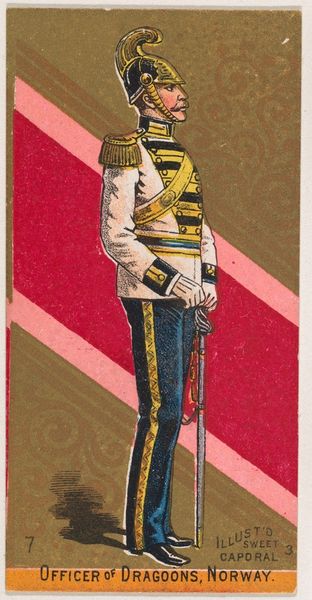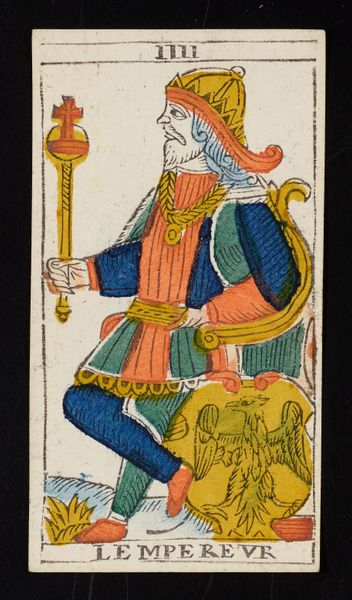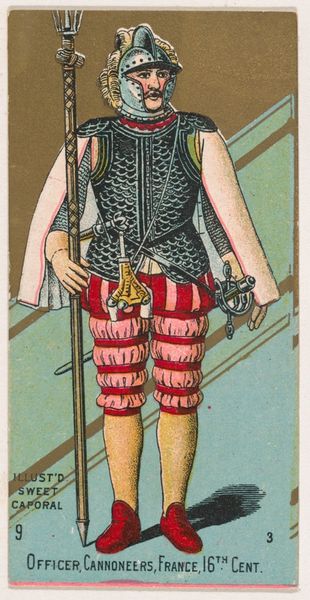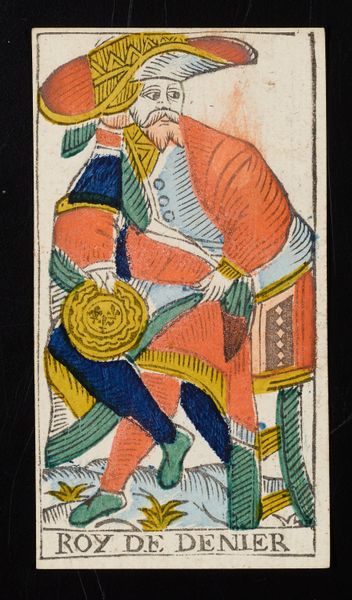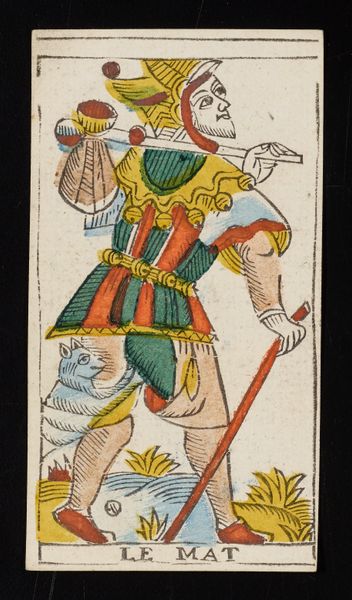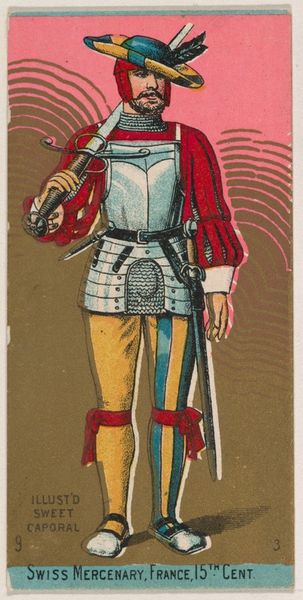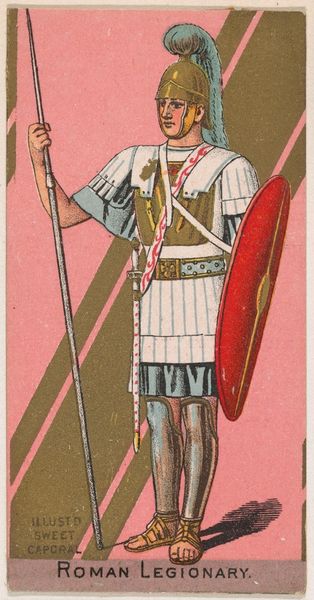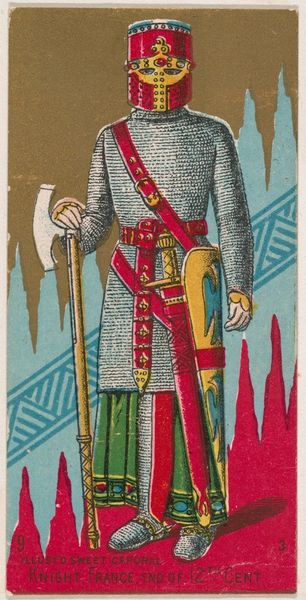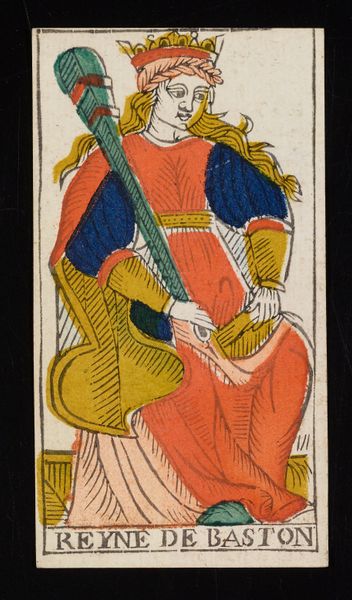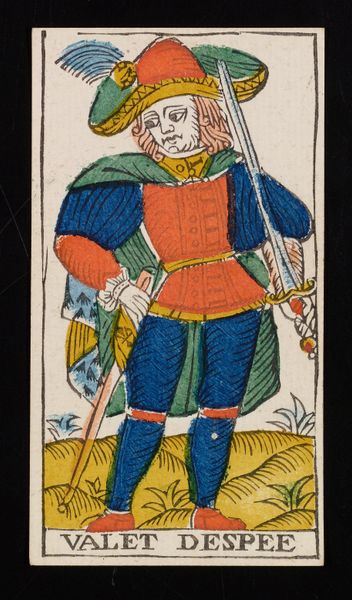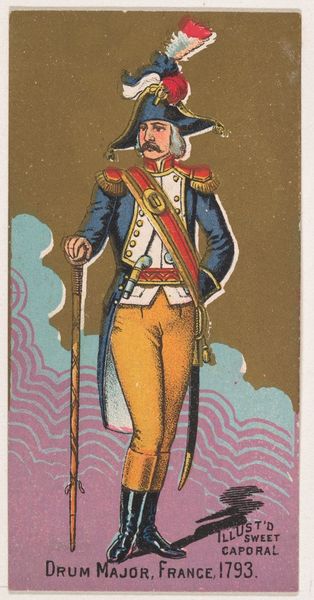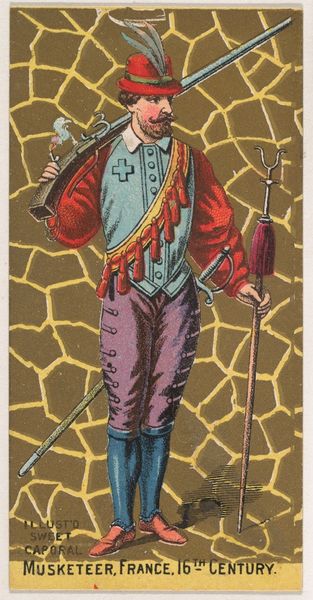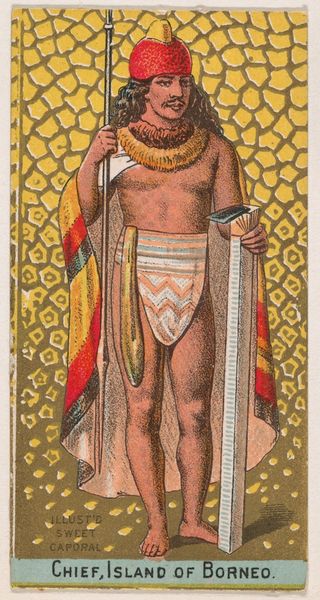
Kings Swiss Guard, France, 16th Century, from the Military Series (N224) issued by Kinney Tobacco Company to promote Sweet Caporal Cigarettes 1888
0:00
0:00
drawing, print
#
drawing
# print
#
caricature
#
caricature
#
soldier
#
naive art
#
men
#
history-painting
Dimensions: Sheet: 2 3/4 × 1 1/2 in. (7 × 3.8 cm)
Copyright: Public Domain
Curator: Here we have a chromolithograph from 1888, “Kings Swiss Guard, France, 16th Century,” one of the many cards issued by the Kinney Tobacco Company as part of their Military Series to promote Sweet Caporal Cigarettes. Editor: It's such an odd combination of flat rendering and bright colors. He's quite striking. Sort of aggressively cheerful, really, with the red and yellow stripes. And what an elaborate costume! You can practically smell the dye. Curator: The costume is fascinating. This image represents an interpretation of 16th-century Swiss Guard attire. The Swiss Guard served various European monarchs, prized for their discipline and loyalty. Notice how his clothing is split, one side red, one yellow: this can symbolize a bridge, where allegiance shifts and duality serves a unifying purpose. Editor: Given that this appeared on a cigarette card, what about the social conditions surrounding its production and consumption? What kind of labor went into its making? Lithography at that time was increasingly mechanized, often involving long hours in environments saturated with fumes from inks and solvents. And the intended consumers – primarily working-class men buying affordable cigarettes – they become linked to this idealized symbol of military strength and historical pageantry. Curator: Certainly, this popular image helped to cultivate a romanticized, accessible narrative of valor and tradition in everyday life, as the company wanted, although removed from actual material labor, and that fits the concept of caricature too, right? Because it simplifies complex historical, social, and military aspects into a recognizable character? The bright colors probably would stand out too in the drab realities for industrial workers. Editor: Right, because it provided escapism. We can see the card itself then as a manufactured object, embedded in specific socio-economic relationships during an age of industrial expansion and increased consumerism, meant for fleeting pleasure, and soon forgotten. The labor used to create it, and the reasons why, are interesting in thinking about value. Curator: I think understanding the various intended audiences, for the 16th century guards and 19th century consumer markets, enriches our appreciation of how cultural identity and history have been mediated and constructed. Editor: And for me, thinking of this chromolithograph in the context of materials and human experience invites us to consider how such an ephemeral artifact, with all its contradictions, is part of a larger story about production, consumption, and aspiration.
Comments
No comments
Be the first to comment and join the conversation on the ultimate creative platform.

